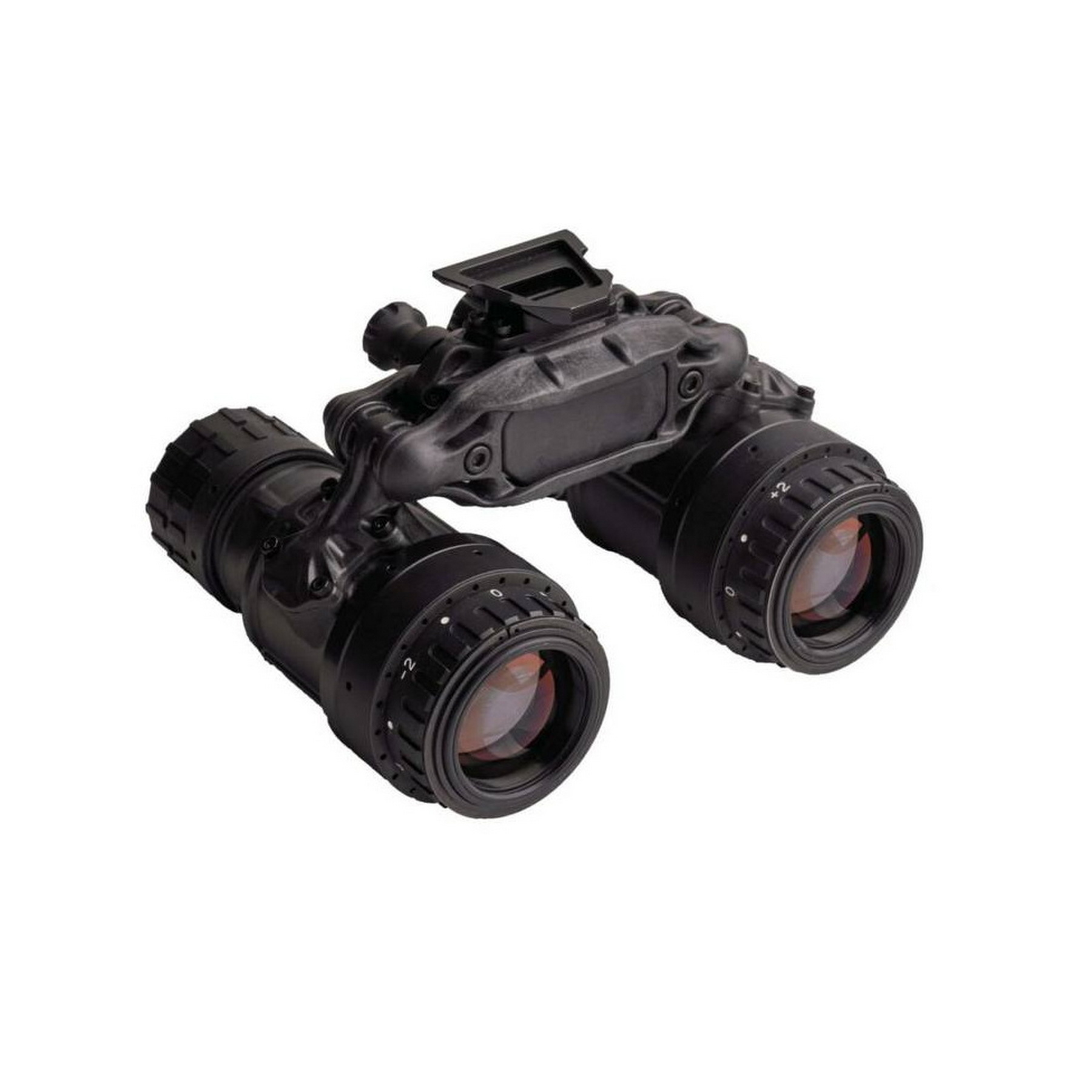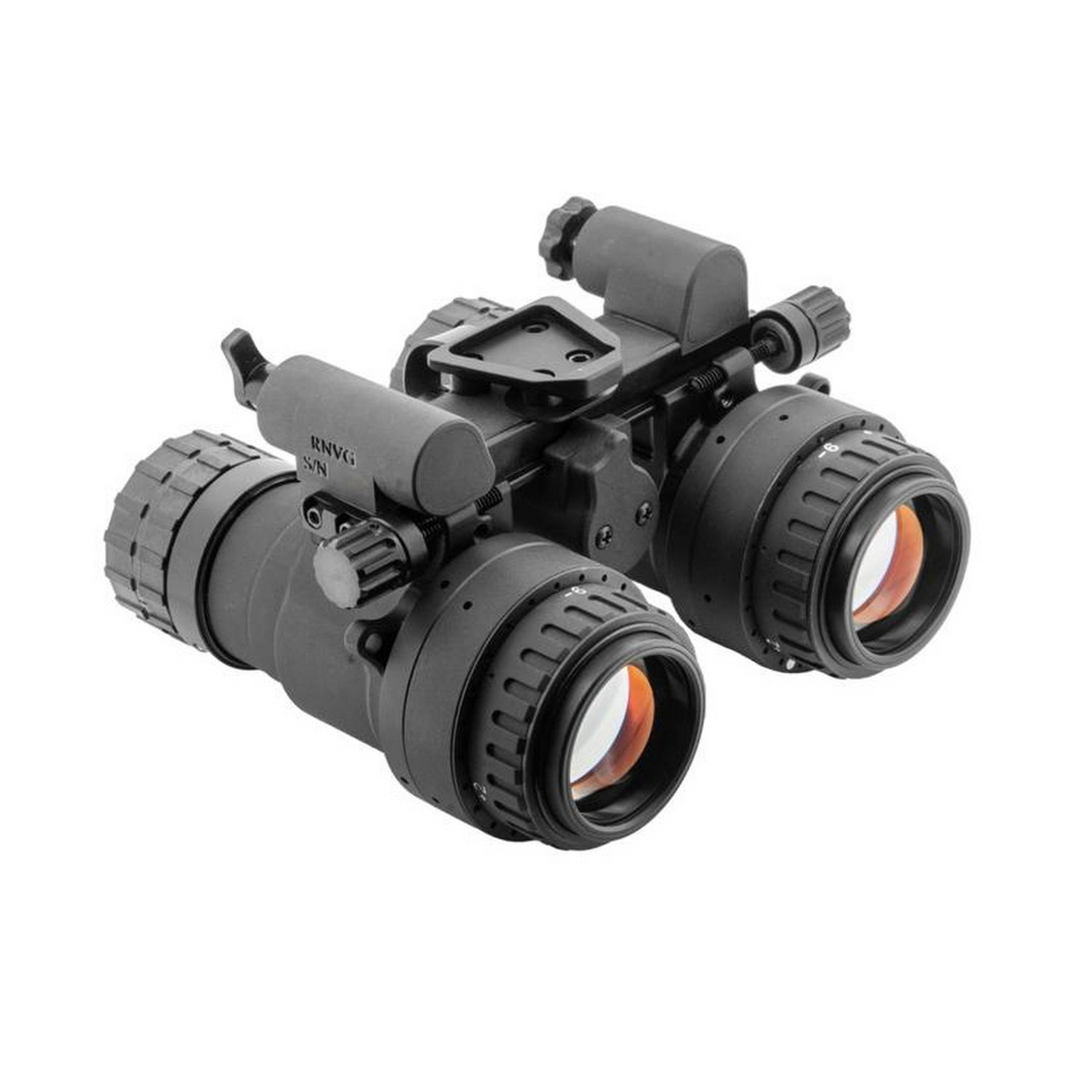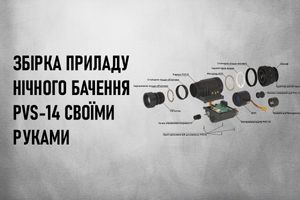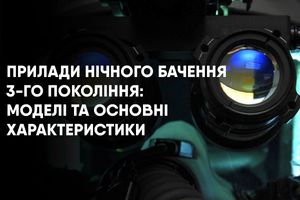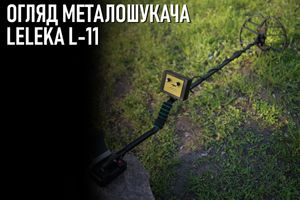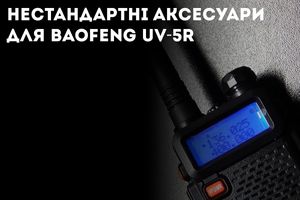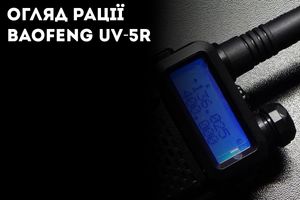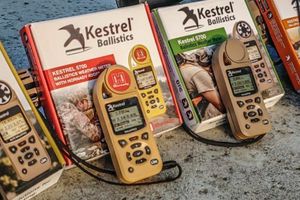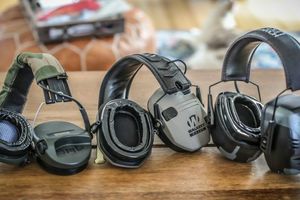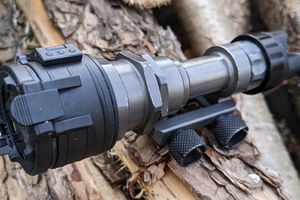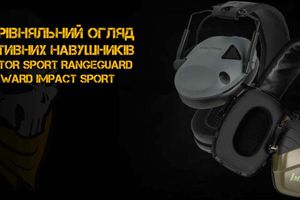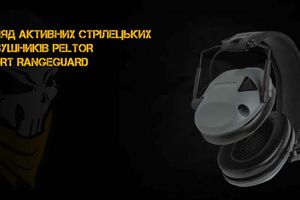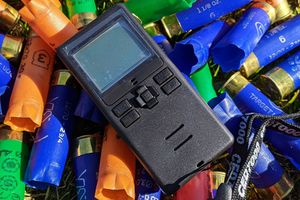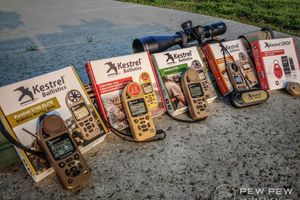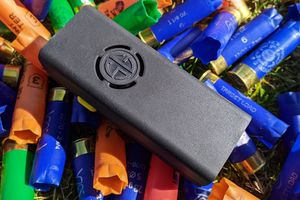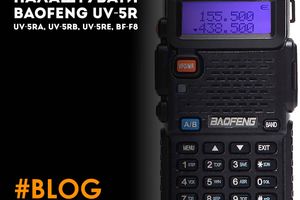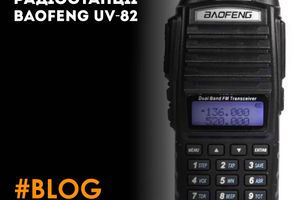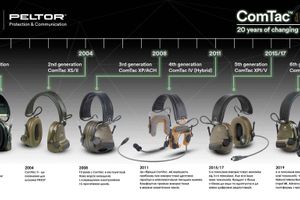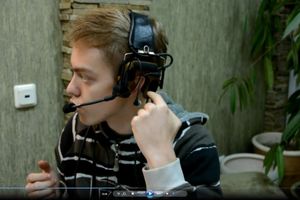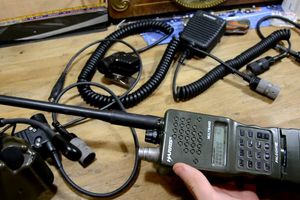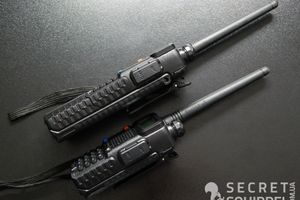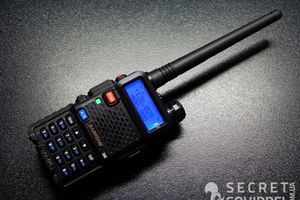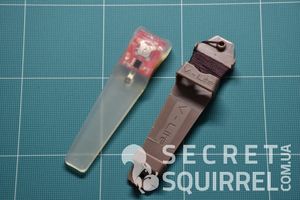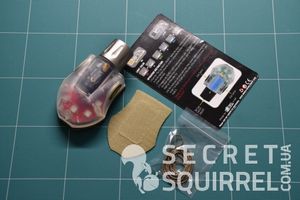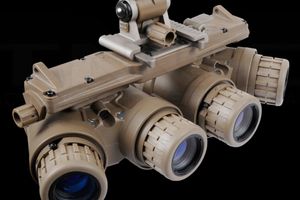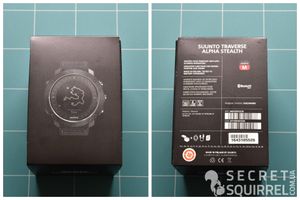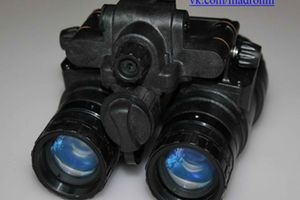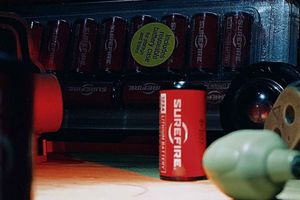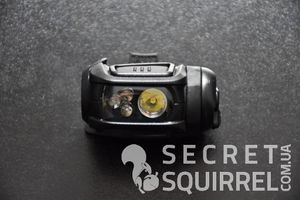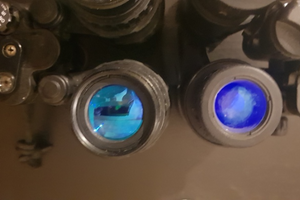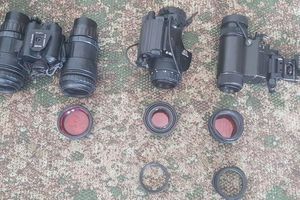At present, the market offers a wide variety of night vision devices, with numerous models from various manufacturers. Occasionally, uninformed shoppers may be deceived by exaggerated and unrealistic product performance claims, primarily intended as marketing tactics.
In this article we tell you how night vision devices work, what characteristics to pay attention to when buying NVD and how different generations I–III are distinguished.
Operating principle of night vision devices
All night vision devices (residual light intensifier) operate on a basis of multiple amplifying of available light sources at a visible and near-infrared wave range. The night vision device consists of a lens, an image intensifier tube (tube), a power source and an ocular.
The components of a night vision device:
-
lens,
-
image intensifier tube (tube),
-
power source,
-
ocular.
Stages of image formation
-
The available ambient light (residual light) emitted by the object of observation reaches the lens.
-
Then through the tube input the light falls on a plate with a photosensitive layer (cathode), due to which an image of the observation object is formed.
-
This image is electrically amplified and projected in a vacuum chamber (for devices with the tube from gen.II — on a microchannel plate, MCP) onto the screen — the output side of the tube’s phosphor layer (screen).
-
As a result, a greenish-yellow optical image is formed, which enters the observer's eyes through the ocular.
Note. Only a few high-tech tubes (ONYX™ – Technology) operate in a natural black/white modus.
Black/White (ONYX™) is the alternative black/white night vision technology. A number of studies have shown that observed happenings at night are looking more natural by using the black/white technology, instead of the usual green one. The black/white technology is invented for those, who value a less eye stressing night observation. This black/white technology is more precise and clearer by transmitting information such as contrast, shapes and shadows.
Thus, the characteristics of a night vision device are determined by the tube and the optical system characteristics.
Today there are tubes of I, II and III generations (with subdivisions Gen. I+ and Gen. II+), which differ in design features, quality of the reproduced image and, accordingly, the price of NV with tubes of different generations also differs significantly. Whereby the tubes of the European production (PHOTONIS) are not entirely matching the classifications (Gen. I, I+, II, II+, III), which were introduced by the USA (ITT). Therefore this (European) production has to be considered separately, because the European developers stroke another way and developed their own advanced technologies (CommGrade 1441/1451, CommGrade ECHO, SuperGen®, XD‑4™, XR5™ and Intense 4G).
|
|
|
Next, let's take a closer look at the basic elements that make up a night vision device.
Image intensifier tube
FOM, performance value of a tube
The figure of merit (FOM) is used to determine the performance of a tube. This value is easily calculated for all types of tubes from known measured values. It provides a very distinctive insight in the performance and quality of all modern types of tubes. This parameter is used by the US authorities for determining the exportability of a tube. It means that the US export of tubes with a high FOM value is regimented and limited, since this value precisely defines the military advances and the performance of the tube.
The FOM value is able to reach currently* a rate of 2000, by Gen. II, Gen. II+, ECHO, SuperGen®, Gen. III, XD‑4™ and XR5™. It is an extreme high value, but not the maximum (PHOTONIS is able to reach FOM average value of 2340 with Intense 4G tubes – this value is a peak currently* around all types of tubes. The purchase of this technology is only possible for a few state security institutions, which have no restrictions and possess an unlimited budget).
The FOM value varies from one tube to another. Many good tubes have currently* a FOM value of approx. 1600. But also tubes with a considerable lower FOM value can be of excellent quality. Thus, the FOM is only one of many other parameters. Therefore it is very important whether the tube is individually meeting the requirements and if the advisory service for the customer is designed in a fair way.
Thus, tubes with a very high S/N value and a very high resolution (lp/mm) have the highest FOM value.
Some FOM value* examples for PHOTONIS tubes
|
Image intensifier tube type |
FOM value (typical) |
|
CommGrade type S1100 |
1100 |
|
CommGrade type S1550, 1441/1451 |
1536 |
|
CommGrade type ECHO |
1800 |
|
SuperGen® |
1536 |
|
Gen. III type P1550 |
1536 |
|
XD‑4™ |
1536 |
|
Gen. III type HP1850 |
1836 |
|
XR5™ |
1836 |
|
Intense 4G |
2340 |
*state: 2020-02-01
Image Intensifier Tubes of Generation I
Generation I was developed in the mid-1950s. This tube has a glass-vacuum chamber and the following characteristics:
|
Cathode photosensitivity (at 2850K) |
Light amplification |
Resolutions |
|
120–250 µA/Lm |
х120–900 |
25–35 lp/mm |
This type of device you may find on the market for approx. €300. A specific characteristic of the Gen.I devices is that the reproduced image is only sharp in the middle and distorted at the borders of the observation image. Especially if diverse light sources like flashlights or illuminated windows emerge in the field of view – the whole observation image is overexposed and the observation is utterly impossible.
We should note that after production, tubes of the same generation are separated by quality grades: A, B, C, and failing tubes with a D grade. This division is based on cathode light sensitivity, resolution and image clarity.
The division into classes affects the price of the product and explains why similar devices of the same generation from different manufacturers have different costs. Small black dots do not interfere with the observer in the darkness, so the buyer should not criticize this characteristic. On the contrary, instruments with bright and constant luminous dots or with a bright spot in the middle of the image are unsuitable for good observation. It is also not recommended to buy low-contrast tubes with a dim and blurred image.
The purchaser may understand and recognize whether the image is clear or spots loaded, but only a trained eye is able to ascertain the photosensitivity of a device – which in fact is the major criteria. The photosensitivity is tested under realistic nighttime conditions, by comparison of various devices.
Due to the low amplification, the single-stage (single-stage = 1 tube, multistage = 1, 2, 3 tubes built in a row) Gen.I devices are depending on the light intensity of the optics and on the performance of the tube. Only devices with high-quality tubes in connection with especially light sensitive optics (relative aperture not higher than F1.5) are able to ensure an optimal observation during twilight and total darkness with ¼ moonlight. At lower surrounding illumination the night vision device (image intensifier) requires an additional light source, an IR-illuminator.
Very good Gen.I devices have an automatic protective function against high increase of the overall lighting level, thus this function counteracts the wearing of the tube when suddenly intense light sources appear or the device is unintentionally switched on at daylight time.
To increase the performance a number of tubes are placed in one case (multistage devices). The light amplification of a three-stage-device can be approx. 20000 up to 50000 times higher. However, through this procedure strong distortions occur and the resolution on the edges of the image decreases intensely. Multistage devices are unhandy and heavy, that’s why they have been almost forced out of the market by devices of the Gen.I+ and Gen.II. Devices of the Gen.I+ and Gen.II have an obviously better performance and are only a bit more expensive than the multistage devices of the Gen.I.
Image Intensifier Tubes of Generation I+
Such devices are a further development of the 1st generation and were developed in the late 1960s.
In the Gen.I+ design, instead of flat glass, a fiber optic layer is placed at the input (sometimes also at the output). In this way, the resolution of the tubes is significantly increased, shape distortion is reduced, and the protection function against side glare effects is increased.
Gen.I+ tube characteristics
|
Cathode photosensitivity (at 2850K) |
Light amplification |
Resolutions |
|
≥280 µA/Lm |
х1000 |
45–50 lp/mm |
The difference between devices with Gen. I+ tubes and their previous model with Gen.I tubes, is a clear and pleasant picture, low self-noise and a greater observation distance — in the passive and active state (using the IR-illuminator).
These Gen. I+ devices are preeminent applicable in urban areas. Additionally, by natural light (residual light) are such devices applicable up to a limit value of ¼ of the natural moonlight. The price of a Gen. I+ tube is only approx. 4 up to 9 times higher than the price of a Gen.I tube.
Image Intensifier Tubes of Generation II
The Gen. II tube differs constructionally from the Gen. I+ tube due to the presence of a special electron-amplifier – microchannel plate (MCP), which is placed between the cathode and the phosphor layer (Development of the end of the 60s). In such a tube, the electrons are multiplied by a very high quality, high-class micromechanics (with 8–12 millions channels of only 18 mm diameter effective area). The effort necessary to produce such a high-class tube is reflected in the price of it.
Gen.II tube characteristics
|
Cathode photosensitivity (at 2850K) |
Light amplification |
Resolutions |
|
≥240 µA/Lm |
х25000–50000 |
32—38 lp/mm |
Gen.II, II+ tubes are manufactured using exclusively a multi-alkaline cathode. Life expectancy of Gen. II tubes are approx. 1000 up to 3000 hours. Gen. II tubes also differ in two types of microchannel plates (MCP): 25mm and 18mm. From the view of the observer a plate with a larger diameter ensures a comfortable observation (comparable with a TV), but logically increases the size of the device.
Image Intensifier Tubes of Generation II+
Gen.II+ devices were developed in the 1980s. They do not have an acceleration chamber. The life expectancy of such devices is about 1000-3000 hours.
Gen.II+ tube characteristics
|
Cathode photosensitivity (at 2850K) |
Light amplification |
Resolutions |
|
≥500 µA/Lm |
х25000–35000 |
39—45 lp/mm |
Due to the absence of an acceleration chamber, the light amplification by Gen. II+ tubes is lower than by tubes of the Gen.II. By the difference in the photosensitivity of the cathode and particularly higher sensitivity for infrared light, the Gen.II+ devices are proven to be better than the Gen.II devices by natural light (residual light). If the main task of the night-vision device is to shoot photos or/and videos, it is advisable to choose a Gen.II device with a higher light amplification.
All devices of the Gen. II and Gen. II+ have:
- an automatic brightness control (ABC) for retaining the equal brightness by changing of the ambient light (residual light); as an automatic protective function by intense increase of the overall level of illumination;
- bright source protection (BSP) for blooming-protection of strong punctual light;
- high image quality without distortions over the entire screen area.
Gen. II and Gen. II+ devices belong to professional night vision and are currently in military use, because these devices are able to operate during very low ambient light (residual light) — which can be compared with a starry sky or even partly cloudy starry sky.
Image Intensifier Tubes of Generation III: ECHO, SuperGen®, XD‑4™, XR5™, Intense 4G
Gen. III tubes differ from the Gen. II+ tubes by their construction of the cathode. Gen. III tubes have a Gallium-Arsenide cathode (GaAs) with more sensitivity for IR-light.
Gen.III tube characteristics
|
Cathode photosensitivity (at 2850K) |
Light amplification |
Resolutions |
|
900–1600 µA/Lm |
х30000–55000 |
32–64 lp/mm |
Omnibus 1 and omnibus 2 were developed at the end of the 70s, omnibus 3 and omnibus 4 are further developments of the late 80s. Omnibus 7 is currently* the most powerful Gen. III tube with a FOM value of approx. 2300. The performance of Gen. III tubes may vary, depending on type and specifications (omnibus 1 up to currently* 7 Pinnacle), by circa 300%.
The life expectancy is around 10000 up to 15000 hours, which is 3–4 times longer than the Gen. II tubes. Devices with Gen. III tubes are operating excellently in extremely low ambient light (residual light).
ECHO, SuperGen®, XD‑4™, XR5™ and Intense 4G tubes with an Auto-Gating function are excellent suitable for operations in urban areas. The observation image of these image intensifier tubes is saturated, sharp, with excellent contrast and recognition of also smallest details.
Auto-Gating is a special control electronics solution that is able to switch the tube on and off with a very high frequency, which is imperceptible by the eye. This innovative function allows the observer to operate in bright ambient light, or even in daylight operations. By keeping the full capability and performance, this function provides an efficient wear- protection of the device. Furthermore this electronic solution eliminates the glare of the light source by maintaining the performance. Moreover, this function meets the high tactical requirements – for instance by operating under bright lighting conditions such as military operations in urban terrains which define many of today’s missions. This special control electronic solution prevents blending and shadowing by variant types of light sources or fire and helps to minimize the abrasion of the tube.
Gen.I-III Tube Characteristics Summary Table
|
Generation |
Cathode photosensitivity (at 2850K) |
Light amplification |
Resolutions |
|
I |
120–250 µA/Lm |
х120–900 |
25–35 lp/mm |
|
I+ |
≥280 µA/Lm |
х1000 |
45–50 lp/mm |
|
II |
≥240 µA/Lm |
х25000–50000 |
32—38 lp/mm |
|
II+ |
≥500 µA/Lm |
х25000–35000 |
39–45 lp/mm |
|
III |
900–1600 µA/Lm |
х30000–55000 |
32–64 lp/mm |
The optics
Night vision devices optics consists of a lens and an ocular.
The lens
The primary requirement for a lens is its ability to efficiently transmit light across both the visible and invisible ranges of infrared (IR) light. This light transmission capability is quantified using F-numbers (relative aperture), such as F1.0, F1.4, F2.0, F2.8, F4.0, and so on. Increasing the F-number by one signifies a two-fold reduction in light transmission. A lower F-number, indicating a wider relative aperture, holds significant importance for night vision devices, particularly for those in Generation I and Generation I+ categories. When the relative aperture is reduced to values between F2.4 and F2.8, the human eye can perceive more than a Generation I night vision device equipped with an active IR illuminator.
The development and subsequent production of optics featuring a low F-number like F1.5 (indicating a high relative aperture) pose significant challenges and expenses, making it a complex undertaking that few companies can easily undertake. Naturally, the high costs associated with development and production contribute to an increased final price for such optics. In their pursuit of uninformed customers, many manufacturers opt for lenses with 3.5 to 5 times magnification, but these lenses tend to have reduced light transmission for longer distances.
It's important to note that when comparing two identical devices with similar tubes, the device with higher magnification will often produce lower-quality images than the one with lower magnification. While the device with higher magnification may have a shorter range in the immediate vicinity (referred to as the residual light area), it typically falls short in terms of light transmission compared to a device with lower magnification and a higher light-transmitting.
This observation holds particular significance for night vision rifle scopes. In certain instances, manufacturers employ a mirror-objective lens design to reduce the size of a night vision device. However, this approach comes with notable drawbacks. It does not guarantee effective camouflage or coverage, primarily because the mirror-objective lens relies on mirrors, and its light transmission performance is considerably lower when compared under similar conditions.
The ocular
The design of the eyepiece does not affect the range of the night vision device but plays a crucial role in its observation capabilities. Simplifying the eyepiece construction can result in shape distortion of the observed objects and lower resolution at the image edges. Some manufacturers' eyepieces only cover a portion of the total field of view, despite the tube being a significant and valuable component of a night vision device.
In the context of night riflescopes, it's essential that the eyepiece construction provides an eye relief distance of at least 40mm to prevent potential eye injuries from the recoil of the firearm. The ideal eye-relief distance for a night rifle scope should ideally be between 40 and 45 mm. Additionally, it's worth noting that an eye-relief distance of 40 to 45 mm significantly improves the quality of photography and video recording.
The majority of night vision devices feature advanced glass optics. There are, however, some exceptions, such as budget-friendly Generation I night vision devices that utilize plastic optics, as well as certain civilian-oriented devices from reputable manufacturers. It's clear that devices with plastic optics generally offer lower quality when compared to those equipped with robust glass optics.
IR-illuminator
Some civilian night vision devices come equipped with a built-in IR illuminator. This feature allows for illuminating the observed object when there's insufficient ambient light (residual light) for passive observation (without the IR illuminator). IR illuminators are available in various types, including laser, LED (Light Emitting Diode), and specialized incandescent lamps. It's crucial to be aware that laser illuminators can potentially pose a risk of eye damage and are subject to legal regulations in some countries. On the other hand, LED IR illuminators are considered safe for the eyes.
When a night vision device lacks a built-in IR illuminator, it's possible to utilize an independent IR illuminator. Many manufacturers may not explicitly clarify that the performance metrics they provide typically pertain to the input power. It's essential to understand that the input power of a device does not equate to its output power. Therefore, an IR illuminator with an output power of 75mW physically emits around 70% more IR light compared to an IR illuminator with the same 75mW input power. This distinction is a critical factor to consider when using a night vision device (image intensifier) in an active state with an IR illuminator.
In some night vision devices 900 nm IR-light wave range illuminators are used. Their radiated light is not visible for the human eye and for the eyes of most wildlife species. Such devices are used by military- or police operations, to preserve the coverage.
Observation range
Night vision users should consider that the observation range and the ability to detect observed objects depend on several factors, including ambient light (residual light), atmospheric conditions, and the contrast between the observed object and its surroundings. When there is ample ambient light, such as during a moonlit night or with additional artificial light sources, the observation and detection range increases, especially when the observed object contrasts against a bright background like sand or snow. Conversely, in conditions of low ambient light, greater atmospheric density, and with a dark background like soil or logs, the observation and detection range significantly decrease.
The average observation- and detection range (meters) of a human body with a contrasty background
|
Full moon 0,1 Lux |
½ of the moon 0,05 Lux |
¼ of the moon 0,01 Lux |
Starry night sky 0,001 Lux |
Cloudy night sky 0,0001 Lux |
|
|
Without a night vision device |
230 |
130 |
45 |
- |
- |
|
Gen. I |
300 |
200 |
150 |
100 |
50 |
|
Gen. II Gen. II+ |
630 |
630 |
590 |
390 |
145 |
|
Gen. III ECHO, SuperGen®, XD‑4™, XR5™, Intense 4G |
>810 |
>810 |
>770 |
>530 |
>200 |
Conclusions: How to choose an NVD
The more appealing a night vision device is to a buyer, the more compact, lightweight, and capable of long-range performance it aims to be. However, these preferences can sometimes conflict. For instance, achieving a longer range typically necessitates a device with a larger lens diameter.
Ultimately, the decision rests with the buyer, and our aim is to offer some key considerations to assist in your choice.
-
If you have no specific performance or image quality requirements for night observations, you may base your decision on appearance and price alone.
-
However, for demanding observation tasks and professional operations, especially when dealing with Generation I devices, we recommend selecting a device equipped with a high light-transmission lens, ideally with a relative aperture not exceeding F1.5.
-
It is advisable to prioritize night vision devices from reputable manufacturers with extensive experience in production and customer support. Additionally, ensure that the manufacturer can offer proper service both during and after the warranty period.
-
For professional and performance-focused operations, consider devices from a select group of tube producers, including Gen. II+, ECHO, SuperGen®, Gen. III, XD‑4™, XR5™, and Intense 4G.
-
Check in practice whether the claimed performance corresponds to reality. Product information may contain overstated performance data and changes regularly depending on the measurement method used by the manufacturer.
-
Before finalizing your purchase, thoroughly test the device for proper functionality when buying from a physical store. If ordering online, opt for cash on delivery and inspect the device's condition at the point of delivery.
Source: https://alpha-photonics.com/en/basic-knowledge-of-night-vision/

























































































































